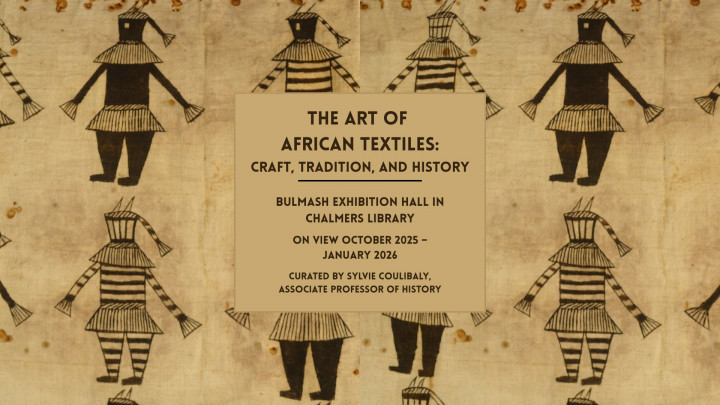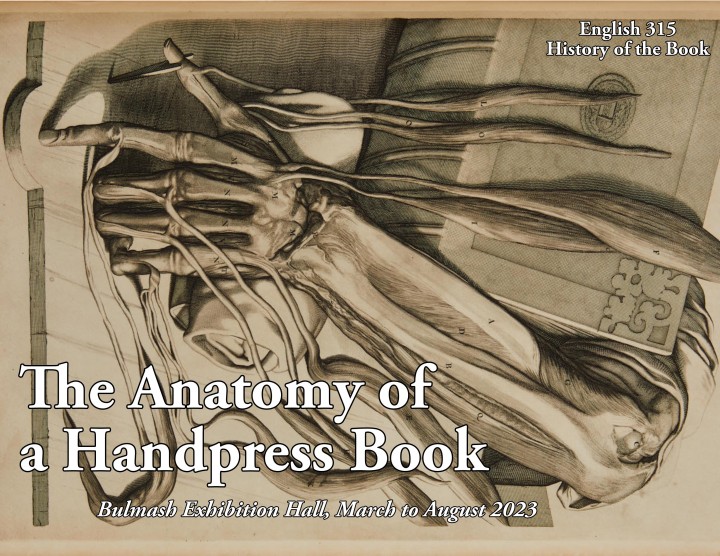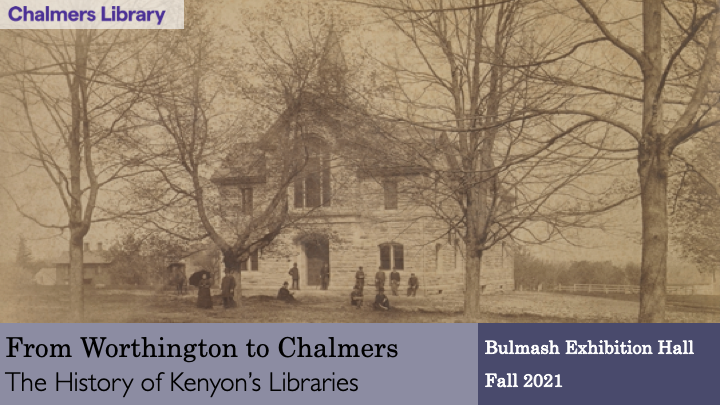Current Exhibit
Late Fall 2025:

The Art of African Textiles: Craft, Tradition, and History
Textile creation is one of the oldest human technologies dating back to the Paleolithic Era. In Western and Central Africa, the production of textiles has developed into an art form representing rich and varied artistic and cultural traditions. In these regions, many textiles were specifically designed to record and to preserve history, culture, and tradition, making them historical sources in their own right.
Today, in spite of competition from industrial printed textiles that often copy traditional designs, West and Central African artisans have shown incredible resilience. Their creativity, ability to innovate with new techniques, patterns and fibers while continuing to preserve ancient traditions and skills is a testament to their sense of responsibility as craftspersons and to their sense of identity and pride as Africans.
Curated by Sylvie Coulibaly, Associate Professor of History
Past Exhibits
Fall 2025:

Banned, Challenged, and Censored Books
For as long as there have been books, they have been challenged, banned, and censored. Today, the United States is witnessing a dramatic rise in book bans and challenges across the country, mostly opposed to books that portray characters who are members of the LGBTQIA+ community and/or are people of color, as well as the histories of these marginalized communities. This exhibit seeks to pull out five broad categories of why books have been banned both historically and in the current moment.
Curated by the staff of Special Collections & Archives
March 2025 - August 2025:

Kenyon Camera Club: 19th C. Photography from the Kenyon Military Academy
A student group of the Kenyon Military Academy, the Kenyon Camera Club played a pivotal role in documenting life in Gambier during the late 19th century. The Academy, a preparatory school for boys, offered robust academic and extracurricular programs—including the Camera Club, which enabled students a creative outlet to capture their surroundings, creating a visual archive of the past.
Curated by the staff of Special Collections & Archives
November 2024 - Early Spring 2025:

Dust: Jumpstarting Life on Earth’s Coldest, Driest Continent
How can tiny dust particles melt glaciers and support life? How can that life shape a complex ecosystem? What’s it like to do science on a remote and frozen continent? In this exhibit, follow ENVS faculty member Ruth Heindel and her research team on their journey to understand dust’s influence on when and where microbial life occurs, spanning widths smaller than a hair to larger than a continent. Along with their collaborators from Boise State and Ohio State Universities, Heindel’s lab group studies tiny dust particles that land on glaciers and snowbanks in the McMurdo Dry Valleys of Antarctica. Dust interacts with snow and ice to release nutrients. Nutrients jumpstart life and feed microorganisms in this extreme environment. The team uses microscopy, freeze-thaw laboratory experimentation, and energy balance modeling. Their research adds to our understanding of mineral weathering in glacial landscapes. This traveling exhibit showcases the work of the research team from the field to the lab. Starting in January, a paired exhibition at The Gund, Something Blue, explores how ice is represented in modern and contemporary art. The conversation between these exhibitions encourages connections between scientific and artistic communication.
Designed by Haylen Scott (Ohio State ‘25), produced by Jason Cervenec (Ohio State), and curated by Ruth Heindel (Kenyon), Anna Bergstrom (Boise State), William Bryant (Kenyon ‘25), and Jordan Schisler (Kenyon ‘25). Something Blue is curated by Daisy Desrosiers, Director and Chief Curator at The Gund.
August 2024 - October 2024

Bicentennial and Beyond: The History of Kenyon College 1925-2024
In this exhibit, the third and final in celebration of the College’s Bicentennial Year, we look at Kenyon over the last century as it evolved into the College we know today. The Hill is growing, adding buildings and people to Gambier’s landscape while striving to maintain the picturesque vistas. Noticeable diversity finally arrives at the College as well, with students of color arriving in the late 1940s and women in 1969. With these additions, along with an increasingly diverse faculty and curriculum, Kenyon is becoming the academic institution and community we call home today.
Curated by the staff of Special Collections & Archives with assistance from Professor Villegas’s Spring 2024 Sociology 291.02 class
March 2024 - August 2024

Lend Us To Our High Endeavor: The History of Kenyon College 1875-1924
In this exhibit, the second of three in celebration of the College’s Bicentennial Year, we look at Kenyon in its adolescence. The College is established, but there are growing pains. Money is still an issue as is enrollment. It is during this period the College inaugurates its longest-serving president, weathers an international scandal, and celebrates its Centennial. The turn of the 19th into the 20th century introduces electric lighting to the dorms in 1921 and sees the young men of Kenyon face a World War. We also hear the first renditions of familiar Kenyon songs like “The Thrill,” which lends us our title to this exhibit.
Curated by the staff of Special Collections & Archives
January 2024 - March 2024

"This Will Do." Kenyon History 1824-1874
“This will do.” With this restrained sentiment, Philander Chase, the first Episcopal Bishop of Ohio, selected this Hill for the home of Kenyon College. In this exhibit, the first of three exploring Kenyon’s past in celebration of the College’s Bicentennial Year, we look at the first 50 years of Kenyon’s existence from its founding in Worthington to the arrival of the railroad in Gambier. Visitors will be able to see how early life on the Hill was lived and how the first 50 years shaped where we are now.
Curated by the staff of Kenyon College Special Collections & Archives
October 12, 2023 - January 2024

Jim Crow Ohio
Despite a growing body of scholarship to the contrary, the Jim Crow regime remains trapped in what historians Matthew Lassiter and Joseph Crespino call “a mythology of southern exceptionalism.” Relegating the horrors of Jim Crow to the South obscures its Midwestern manifestations. Pulling together photographs, newspapers, books, and other artifacts, this exhibit reminds us of the ways targeted and systemic racism took root right under our feet, here in the state of Ohio. By confronting Ohio’s history of racist violence and segregation (in both fact and law), a true reckoning with American injustice can ensue. Viewers will observe how the Jim Crow system was not strictly a southern phenomenon, but rather a reflection of the nation’s character as a whole.
Curated by Francis V. Gourrier Jr., Assistant Professor of American Studies & History
August 11, 2023 - October 11, 2023

Otto Ege's Portfolio: Fifty Original Leaves from Medieval Manuscripts
This exhibition offers an opportunity to view a collection of original leaves from medieval manuscripts, curated by the controversial figure of Otto Ege. Visitors are invited to appreciate the beauty and historical significance of these leaves while also prompting reflection on the ethics of biblioclasm and the importance of preserving cultural artifacts for future generations.
Open through mid-October 2023, this exhibit was curated by the students and staff of Special Collections & Archives.
March - August 2023

The Anatomy of a Handpress Book (1450-1900)
The Anatomy of a Handpress Book (1450-1900) examines the different components that came together to make a book during the handpress period, the first three centuries of Western printing before the arrival of the machine printing. These were important formative years, when rapid early developments stabilized into a series of conventions that still influence the modern book. The exhibition explores how title pages developed to advertize and describe books; how printed paper sheets are folded to create different book formats; and how bindings developed to protect them. And it looks at the inter-relationship between text and image via an exploration of typography and illustration.
This exhibition was curated by Professor Piers Brown (English) and the students of his English 315: Book History class in the Fall of 2022.
January 16, 2023 - March 3, 2023

Revolution: Mark our Words!
Revolution: Mark our Words! examines the interplay between revolutionary ideas and revolutions in print and visual technologies. Students in the two classes found examples of revolutionary moments in the history of print media and put those into the historical contexts of corresponding revolutionary political and social movements. Technological advances in printing spread political ideas to wider audiences. As a result, particular images, styles, and typefaces became associated with specific revolutionary ideas and revolutions. This exhibition looks at how political and social change has been represented through the lens of modern graphic design.
This exhibit is a collaboration between students in Professor Eliza Ablovatski’s Kenyon College History seminar HIST 338: Revolt, Rebellion, Revolution, and students in Professor Laura Tabbut’s Mount Vernon Nazarene University Graphic Design class GRD 3023: History of Graphic Design, in the Spring Semester of 2022.
October 12, 2022 - January 10, 2023

The Art of Devotion: Eastern Christian Icons from the Blick-Harris Study Collection
The Blick-Harris Study Collection in the Department of Art History houses a large number of artifacts from the Byzantine Empire and the modern Orthodox Christian traditions that it influences. This exhibit explores the ways in which these objects allowed the faithful to encounter the divine. It also serves as a brief introduction to iconography, aiming to explore the legacy of Byzantium and its relationship to piety in daily life. Each case focuses on a different theme of Orthodox Christian art: the Virgin Mary, piety, relics, the senses, and protective images.
This exhibition was developed by the students of ARHS 291: Museum Object, working collaboratively during instructional time to create the first class-made exhibit in the Bulmash Exhibition Hall.
Fall 2022

Archival Profiles: Notable People from Kenyon's Past
The Kenyon College Archives include a wide range of materials and artifacts documenting the history of Kenyon College, its founders, students, faculty, staff, and alumni. This exhibition invites you to explore some of the people from Kenyon’s past who were poets, mathematicians, artists, translators and actors. Each case highlights a person or people who illuminate a different aspect of the College’s history.
This exhibition was curated by the students and staff in Special Collections and Archives.
Spring/Summer 2022
![]()
Selections from the Bulmash Family Holocaust Collection
Kenyon College Special Collections & Archives invites you to Selections From the Bulmash Family Holocaust Collection, on view through spring 2022. Viewers will learn about the Holocaust through materials such as Nazi propaganda and early Jewish refugee letters soliciting migration assistance, Jewish identification badges, letters from concentration camp prisoners to loved ones, newspapers demonstrating international reactions, post-war liberation documents, and more. This brief introduction to the Bulmash Family Holocaust Collection aims to introduce community members to its impressive holdings and the educational value that the collection offers.
The selection of materials on view provide a glimpse of the larger collection, which has been digitized and is available at digital.kenyon.edu/bulmash.
Fall 2021

From Worthington to Chalmers: The History of Kenyon's Libraries
Kenyon College Special Collections & Archives invites you to explore the History of Kenyon Libraries from the College’s founding in Worthington, Ohio, in 1824 to the opening of Chalmers Library on the Hill this semester. Witness the growth and changes of the collection over time, its movements across campus, the dynamic part it plays in campus life, and more. This exhibition hopes to inform the community about the various roles that Kenyon’s libraries have played over time and to strengthen or even spark a new appreciation for the importance of the institution to life in Gambier.
Upcoming Exhibits in the Bulmash Exhibition Hall
Schedule for 2025
Fall 2025: Banned, Challenged, and Censored Books
Late Fall 2025: The Art of African Textiles: Craft, Tradition, and History, curated by Sylvie Coulibaly, Associate Professor of History
Early Spring 2026: Black History of Knox County, curated by Anna Scanlon, Director of the Writing Center
Interested in curating an exhibit? See the 'Information on Exhibiting in Chalmers Library' link below.
If you have questions, you can contact the Chalmers Library Exhibit Committee.
Information on Exhibiting in Chalmers Library
Apply to exhibit in Chalmers Library
Contact the Chalmers Library Exhibits Committee
Exhibits & Public Display Guidelines and Best Practices
These guidelines define the philosophy and goals for exhibits physically in Chalmers Library or physical or digital collections curated by Library and Information Services, identify responsibility for these programs, and define accepted guidelines and best practices. Chalmers Library staff involved in organizing, curating, and/or installing exhibits or displays are deemed to be acting within the course of official duties and under the authority of Library and Information Services. The Chalmers Library Exhibits Committee, in consultation with the Library Leadership Team, will be responsible for updating and revising this policy.
The display of objects (physical and virtual) is an important part of providing a welcoming and educational space for the Kenyon community and its visitors and also enriches our library outreach programs.
Goals
- Promote and support the Chalmers Library’s strategic directions, services, resources, and the scholarly value of its diverse collections
- Promote and support Kenyon College and surrounding community events, people, history, programs, activities, and accomplishments
Definition of an exhibit and display
- An EXHIBIT is a selection of items (either physical or virtual) paired with accompanying textual, visual, or auditory content (descriptions/interpretations) which serves as a form of communication between the library and its patrons.
- A DISPLAY is a selection of items (either physical or virtual) with little to no accompanying text or provided interpretation. Displays can be, but are not required to be, ancillary to an exhibit.
Purpose and content of exhibits and displays
- The purpose of an exhibit and/or display is to communicate meaning through a collection of items (bibliographic, physical, or digital).
Who may exhibit in Chalmers Library?
- Priority is given to Kenyon organizations and departments.
- All exhibitions and displays must receive approval from the Chalmers Library Exhibits Committee.
Frequency and duration of exhibits
- Exhibit duration will be set in consultation with the Chalmers Library Exhibits Committee.
- Exhibit schedule is as follows:
- Late August to Fall Break
- Fall Break to Early January
- Early January to Spring Break
- Spring Break through Commencement
- Exhibits needing a different time frame, including during the summer months, will require approval from the Committee.
- Installation and de-installation should take 1-2 days, depending on exhibit complexity.
- Installation and de-installation must be scheduled with the Committee.
Exhibit proposal process
Please use this form to share your exhibit proposal for review by the Chalmers Library Exhibits Committee: Chalmers Library Exhibit Application
- Approved exhibits will be assigned a Chalmers library liaison by the Committee to assist with scheduling, design, and content.
- The Committee reserves the right to approve or disapprove exhibit requests, content of exhibit, promotional materials, and give final approval for the layout of the exhibit, exhibit duration, and placement of exhibit.
- The Committee will follow a process for dispute resolution when concerns are raised about exhibit content or depiction.
- The Committee reserves the right to remove or shut down an exhibit that is not in compliance with safety or ADA guidelines or endangers patrons in any way.
Criteria for selection
The following criteria are considered when reviewing applications:
- Educational content ranging from advanced scholarly contributions to general informational value
- The broadness of appeal of the main theme
- Appropriateness of subject, technique, and style for intended location and audience
- Relation to other events or exhibits in the community
- Should not endorse the political, religious, or social doctrines of any single person or group, or support the financial profit of any individual, organization, or commercial enterprise
- Complexity of installation
- Maintains public safety expectations and adheres to ADA compliance
Exhibit locations and display policies
- Chalmers Library has a limited number of physical and virtual exhibit locations.
- Potential exhibitors should discuss locations with the Committee.
- In the Bulmash Exhibit Hall, there are 5 glass cases and 3 walls.
Procedures to install and deinstall approved exhibits
- The exhibitor will work with the designated Chalmers Library Exhibits Committee liaison to verify the schedule and resolve any problems involving library equipment and materials.
- Liaisons may assist in the curation, preparation, installing, or deinstalling of exhibits, if necessary.
- Installation and de-installation of exhibits should be scheduled with a liaison and completed during business hours on weekdays.
- Chalmers Library is not responsible for the damage of any non-Kenyon College-owned materials.
Funding
- Exhibitors are solely responsible for funding all costs associated with the exhibit, including but not limited to printing, shipping, installation, dismantling, and insurance.
- Exhibitors are responsible for publicity beyond that provided by the Chalmers Library.
Guidelines for safe and proper display
- Exhibits and displays must be placed so as to accommodate physical safety considerations.
- No loose cords or cabling; free-standing units must be secure, and ease of egress from the exhibit for emergency purposes must be assured.
- Materials displayed on walls must be securely attached.
- Exhibitors must be mindful when considering use of audiovisual equipment.
- Exhibit space must be ADA compliant.
Exhibit promotion
- Exhibitors are responsible for designing publicity materials related to the exhibit.
- The assigned Chalmers Library Exhibits Committee Liaison may be able to assist with some publicity needs.
- Promotion materials should include social media posts, posters, and an image for the digital signage in the library & on the library home page.
Detailed Instructions for Exhibitors
Exhibits materials handling
- Exhibitors must handle books and artifacts gently and with preservation concerns in mind. In consultation with Special Collections staff, books should be displayed on bookstands, cradles, or supports.
- Special Collections staff and Librarians can provide guidance to library exhibitors for appropriate handling and display of materials with arrangement in advance.
- The method of displaying any Kenyon College Library materials must be approved by Special Collections staff or Librarians.
Exhibit texts/labels
- Display lettering and explanatory information should be neat and accurate.
- Ownership of items on display should be clearly identified.
- The sponsoring organization or group name must be visible in the exhibit.
- Typeface should be a legible font such as Times New Roman, Century, Gil Sans, Baskerville, Copperplate Gothic, or Arial.
- Text should have contrast, such as black on white.
- Introductory panels should be 150-170 words or less.
- Captions for individual items should be 20-30 words.
- Font size should be at least 28 point for introductory text panels. For secondary text panels, 18 point is acceptable if the reader can be within 20 inches. For text that only contains a few lines of copy, 14 point is acceptable.
Exhibit support materials
- Bibliographies, brochures, and other promotional material and/or instructional materials to accompany an exhibit are recommended but not mandatory.
- Exhibitors are responsible for preparing the content of the publications associated with their exhibit. Examples include: a bibliographical list of items displayed; a double-sided brochure; an exhibit catalog.
Dispute resolution
- An exhibit may be canceled or removed if it does not adhere to the agreed upon Guidelines & Best Practices and original exhibit submission goals.
- Challenges of a display, exhibit, or printed materials posted or displayed in Chalmers Library may be emailed to the Chalmers Library Exhibits Committee members (listed below). The Committee will respond to written statements as follows:
- The individual will be notified that the Committee has received their written statement of concern.
- A review process will be conducted in a timely manner by the Committee in consultation with the exhibit sponsor in response to an individual's statement of concern.
- Upon completion of the review process, the Committee will notify the individual of their decision.
Chalmers Library Exhibits Committee Members
Contact email: ChalmersExhibits@kenyon.edu
- Amy Badertscher, Associate Vice-President for Libraries and Strategic Innovation
- Eve Kausch, Outreach Librarian for Special Collections and Archives
- Alex Mann, Library Access Services Supervisor
- Elizabeth Williams-Clymer, Director of Special Collections and Archives